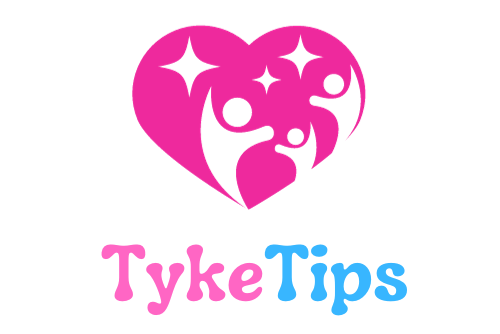Babies are known for displaying some peculiar behaviors that might leave you scratching your head in confusion. From sudden body jerks to wandering eyes, these actions can spark worry in any parent. In this video by Emma Hubbard, a Paediatric Occupational Therapist, she sheds light on six bizarre baby behaviors that are commonly asked about. Each behavior is explained in terms of developmental milestones, helping you understand what’s normal and when to seek advice from a doctor.
By breaking down behaviors such as Moro reflex and strange sleep sounds, Emma aims to provide you with peace of mind and guidance on infant development. It’s essential to remember that this content isn’t a substitute for medical advice, so always consult a healthcare professional if you have concerns about your child’s well-being. Whether it’s grimacing during feeding or spit-ups after meals, Emma offers valuable insights to help you navigate the fascinating world of baby behaviors.

Moro Reflex
The Moro reflex is an involuntary reaction seen in newborns when they are startled by a sudden noise, movement, or change in position. This reflex is characterized by the infant’s arms and legs extending away from their body, their fingers spreading apart, and then quickly coming back together in a hugging motion. It is often referred to as the “startle reflex” or the “embracing reflex.”
Definition of Moro reflex
The Moro reflex is a normal response that typically occurs in the first few months of life in infants. It is believed to be a primitive reflex that served as a survival mechanism for early humans. The Moro reflex helps infants react quickly to potential dangers, such as loud noises or sudden movements, by flinging their limbs outward to create a startle response.
Why do babies exhibit Moro reflex?
Babies exhibit the Moro reflex as a natural and instinctive reaction to being startled, which occurs in response to sudden changes in their environment. The reflex is an automatic response that helps infants protect themselves and signal distress. This reflex usually disappears by four to six months of age as the baby’s nervous system matures.
Duration of Moro reflex
The Moro reflex typically lasts for a few months after birth, with the intensity and frequency diminishing over time. By the age of four to six months, most infants outgrow the Moro reflex as their nervous system develops and they gain better control over their movements.
How to help babies with Moro reflex
To help babies with the Moro reflex, parents can provide a calm and safe environment that minimizes sudden noises or movements. Swaddling the baby in a blanket can also provide a sense of security and reduce the startle response. Holding the baby close to the chest can create a feeling of warmth and comfort, helping them feel more secure and potentially lessen the frequency of the Moro reflex.
Crossing or Wandering Eyes
Crossing or wandering eyes in babies can be concerning for parents, but it is a common occurrence that often resolves on its own as the child grows. In newborns, eye muscles are still developing, which can lead to temporary issues with eye coordination.
Causes of crossing or wandering eyes in babies
Crossing or wandering eyes in babies can be caused by a variety of factors, including genetics, muscle imbalance, or eye conditions. It can also be a result of the brain learning to interpret visual information and guide eye movements. In most cases, the issue resolves as the baby’s visual system matures.
Treatment options for crossed or wandering eyes
In many cases, crossing or wandering eyes in babies do not require treatment and may resolve on their own over time. However, if the issue persists past the age of four to six months, or if it is accompanied by other symptoms such as eye pain or vision problems, it is advisable to consult a pediatric eye specialist for further evaluation and treatment options.
When to consult a doctor for crossed eyes
If crossing or wandering eyes in babies persist beyond the age of four to six months, or if the condition worsens or is associated with other concerning symptoms, it is essential to consult a pediatrician or an eye specialist. Early intervention can help address any underlying issues and prevent long-term vision problems.
Jerky/Uncontrolled Body Movements When Awake
Jerky or uncontrolled body movements when awake are common in infants and are usually part of normal development. These movements may seem random, sporadic, or sudden, but they often serve a purpose in helping the baby explore and understand their body and the world around them.
Reasons for jerky body movements in babies
Jerky body movements in babies are often a result of their developing nervous system. As the baby’s brain matures and makes new connections, these movements help strengthen muscles, improve coordination, and develop motor skills. These movements are typically not a cause for concern and are considered a normal part of infant development.
Difference between normal movements and abnormal movements
While jerky or uncontrolled body movements are common in infants, it is essential to differentiate between normal movements that are part of developmental milestones and abnormal movements that may indicate an underlying neurological issue. Normal movements are typically sporadic and rhythmic, while abnormal movements may be persistent, repetitive, or asymmetrical.
Tips to soothe jerky movements in babies
Parents can help soothe jerky movements in babies by providing a calm and comforting environment. Gentle rocking, swaddling, or holding the baby close can help regulate their movements and provide a sense of security. It is essential to observe the baby’s movements over time and consult a healthcare provider if there are concerns about abnormal or persistent movements.
Strange Sleep Sounds and Movements
Babies often exhibit strange sleep sounds and movements, which can be alarming for parents. While some of these behaviors are typical and pose no risk to the baby’s health, others may indicate underlying issues that require attention.
Common sleep sounds and movements in babies
Common sleep sounds and movements in babies include grunting, sighing, twitching, jerking, and irregular breathing patterns. These behaviors are often a result of the baby’s developing nervous system and are usually harmless. It is essential for parents to differentiate between normal sleep sounds and movements and those that may signal a problem.
Issues that may cause strange sleep behaviors
Strange sleep behaviors in babies can be caused by a variety of factors, such as sleep cycles, dream activity, digestion, or respiratory changes. Some babies may experience sleep disturbances due to discomfort, illness, or environmental factors. Understanding the underlying cause of strange sleep behaviors can help parents provide appropriate care and support.
Creating a good sleep environment for babies
To create a good sleep environment for babies, it is essential to establish a consistent bedtime routine, ensure a comfortable sleeping space, and regulate sleep patterns. Providing a calm and soothing atmosphere can help babies feel secure and promote healthy sleep habits. It is important to monitor the baby’s sleep behaviors and seek medical advice if there are concerns about ongoing sleep issues.
Grimacing and Straining During or After Feeding
Grimacing and straining during or after feeding are common behaviors observed in babies and can be a source of concern for parents. These behaviors may indicate feeding difficulties or discomfort, requiring attention and support from caregivers.
Causes of grimacing and straining during feeding
Grimacing and straining during feeding can be caused by a variety of factors, such as gas, reflux, allergies, or difficulty latching. Babies may also exhibit these behaviors if they are teething or experiencing discomfort in the digestive system. It is essential to observe the baby’s feeding behaviors and identify potential triggers for grimacing and straining.
Signs of feeding difficulties in babies
Signs of feeding difficulties in babies include arching the back, refusing to feed, frequent spitting up, gagging, or coughing during feeding. These behaviors may indicate an underlying issue with breastfeeding, bottle-feeding, or digestion. Monitoring the baby’s feeding patterns and seeking guidance from a healthcare provider can help address feeding difficulties and ensure optimal nutrition.
Seeking professional help for feeding issues
If grimacing and straining during or after feeding persist, or if the baby shows signs of feeding difficulties, it is important to seek professional help from a pediatrician, lactation consultant, or feeding specialist. Identifying the root cause of feeding issues and implementing appropriate strategies can help improve the baby’s feeding experience and overall well-being.
Spit Ups/Reflux
Infant spit-up and reflux are common occurrences in babies and are usually not a cause for concern. However, persistent or severe cases of spit-up or reflux may require attention and management to ensure the baby’s comfort and health.
Understanding infant spit up and reflux
Infant spit-up is the regurgitation of milk or formula immediately after feeding, often accompanied by a burp or a small amount of fluid. Reflux, on the other hand, is the backward flow of stomach contents into the esophagus, causing discomfort or irritation. Both spit-up and reflux are normal bodily functions in infants, but frequent or forceful occurrences may require further evaluation.
Normal frequency and amount of spit up
It is normal for infants to spit up small amounts of milk or formula after meals, as their digestive systems are still developing. Spit-up may increase during periods of rapid growth or when the baby is overfed. In most cases, mild to moderate spit-up is considered normal and resolves without intervention.
Managing reflux in babies
If a baby experiences frequent or severe reflux, it may be necessary to manage the condition through lifestyle changes, feeding adjustments, or medication. Elevating the baby’s head during feeding, burping frequently, and keeping the baby upright after meals can help reduce reflux symptoms. In some cases, a pediatrician may recommend specialized formulas or medications to alleviate reflux symptoms and improve feeding comfort.
Professional Medical Advice Disclaimer
Seeking professional medical advice is crucial for addressing health concerns and ensuring the well-being of yourself and your family. Online content can provide general information, but it should not replace personalized guidance from a qualified healthcare provider.
Importance of seeking professional medical advice
Professional medical advice is essential for accurate diagnosis, treatment recommendations, and ongoing care. Healthcare professionals have the expertise and resources to address specific health concerns, provide tailored advice, and monitor progress effectively. Consulting a doctor or healthcare provider is the best way to ensure comprehensive and reliable medical support.
Not relying on online content for health concerns
While online content can be a valuable source of information, it is important to recognize its limitations and seek confirmation from qualified professionals. Health information available online may not always be reliable, accurate, or applicable to individual circumstances. Relying solely on online content for health concerns can lead to misunderstandings, incorrect self-diagnosis, or delayed treatment.
Emergency protocols for medical situations
In the event of a medical emergency, it is crucial to contact emergency services or seek immediate assistance from healthcare professionals. Prompt action can help address critical health issues, prevent complications, and ensure timely intervention. Having emergency contact information readily available and knowing emergency protocols can save valuable time in urgent situations.
External Links Disclaimer
External links provided on this channel are for informational purposes only and do not signify endorsement, approval, or validation by the channel owner or associated entities. Users are responsible for evaluating the credibility and accuracy of external content and should exercise caution when accessing third-party resources.
Non-endorsement of external links
The inclusion of external links on this channel does not imply endorsement or support for the content, products, or services offered by third-party websites. Users are encouraged to assess the trustworthiness and relevance of external resources independently before relying on their information or recommendations.
Responsibility of third-party content claims
Third-party content providers are responsible for the accuracy, reliability, and appropriateness of their materials, products, or services. Users should direct any inquiries, complaints, or clarifications about external content to the respective providers or website owners. The channel owner does not assume liability for claims, representations, or actions taken by external sources.
Contact information for clarification
If users require clarification, additional information, or assistance regarding external links or content on this channel, they can contact the channel owner directly via the designated email address. Requests for verification, content correction, or feedback on external resources can be directed to the channel owner or associated entities for prompt response and resolution.
Channel Content Usage Disclaimer
All content provided on this channel is intended for general informational purposes only and does not constitute professional medical advice, diagnosis, or treatment. Users are encouraged to consult with healthcare professionals for personalized guidance, recommendations, or care plans tailored to their specific needs.
Limitations of channel content
The content presented on this channel is not a substitute for medical consultation, evaluation, or intervention from qualified professionals. While the information shared here is educational and informative, it should not be used as a replacement for direct medical advice or treatment. Individual health concerns require personalized assessment and management by healthcare providers.
Encouraging consultation with medical professionals
Users are encouraged to consult with healthcare providers, pediatricians, or specialists for accurate diagnosis, treatment recommendations, and ongoing care. Medical professionals have the knowledge, expertise, and resources needed to address health issues effectively and provide appropriate support. Seeking input from qualified professionals ensures that health concerns are managed comprehensively and safely.
Emergency contact information
In cases of urgent health matters, emergencies, or critical situations, users should contact emergency services, local healthcare providers, or relevant authorities for immediate assistance. Having access to emergency contact information and knowing the appropriate steps to take in urgent scenarios is vital for prompt and effective response.
Summary and Conclusion
In this video, we discussed several bizarre baby behaviors that are common in infants and may cause concern for parents. Understanding the developmental significance of behaviors such as the Moro reflex, crossing eyes, jerky movements, strange sleep sounds, grimacing during feeding, and reflux can help alleviate parental worries and promote a sense of reassurance.
We emphasized the importance of seeking professional medical advice when in doubt about a baby’s behaviors or health concerns. Online information can provide general guidelines, but personalized guidance from healthcare professionals is crucial for accurate assessment and tailored recommendations. Parents are encouraged to consult with pediatricians, pediatric specialists, or allied health professionals for comprehensive support and care.
Remember, your baby’s well-being is a top priority, and staying informed about developmental milestones, typical behaviors, and potential health issues can help you navigate the journey of parenthood with confidence. If you have any questions or concerns about your baby’s health or behaviors, don’t hesitate to reach out to a healthcare provider for guidance and support.
Closing remarks from Emma Hubbard: “As a Paediatric Occupational Therapist, I hope this video has provided you with clarity and peace of mind regarding your baby’s behaviors. Remember that each child develops at their own pace, and unique behaviors are part of their individual growth journey. Stay informed, trust your instincts, and seek professional advice when needed. Thank you for watching, and follow me on Instagram for more insights into baby development. I wish you and your little one all the best on this remarkable journey of parenthood.”

